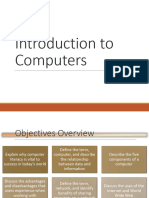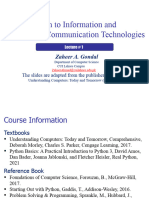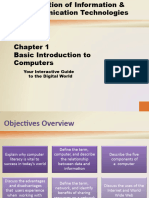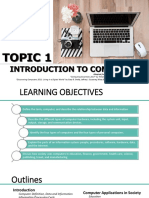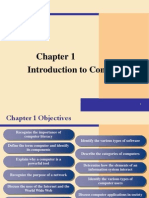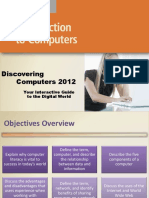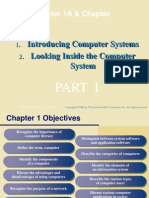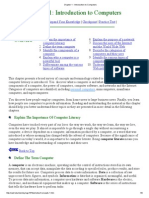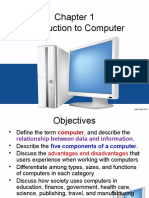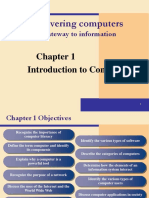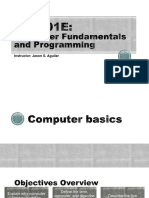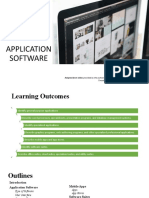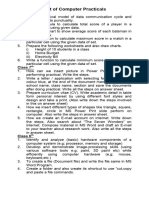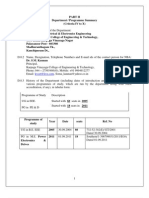0% found this document useful (0 votes)
79 views50 pagesChapter 1 - Introduction - New
This document provides an introduction to computers and information processing. It discusses the key learning objectives of the chapter which are to define computers and describe their relationship to data and information, identify the five main components of a computer, differentiate between types and functions of various computers, explain the uses of computers in society, describe the parts of an information system, and discuss future careers in information technology. The chapter then goes on to describe what computers are, how they process data into useful information, the five main components of a computer including hardware and software, advantages and disadvantages of computer use, computer networks and the internet, and social networking websites.
Uploaded by
Khairul AkmaCopyright
© © All Rights Reserved
We take content rights seriously. If you suspect this is your content, claim it here.
Available Formats
Download as PPTX, PDF, TXT or read online on Scribd
0% found this document useful (0 votes)
79 views50 pagesChapter 1 - Introduction - New
This document provides an introduction to computers and information processing. It discusses the key learning objectives of the chapter which are to define computers and describe their relationship to data and information, identify the five main components of a computer, differentiate between types and functions of various computers, explain the uses of computers in society, describe the parts of an information system, and discuss future careers in information technology. The chapter then goes on to describe what computers are, how they process data into useful information, the five main components of a computer including hardware and software, advantages and disadvantages of computer use, computer networks and the internet, and social networking websites.
Uploaded by
Khairul AkmaCopyright
© © All Rights Reserved
We take content rights seriously. If you suspect this is your content, claim it here.
Available Formats
Download as PPTX, PDF, TXT or read online on Scribd
/ 50





